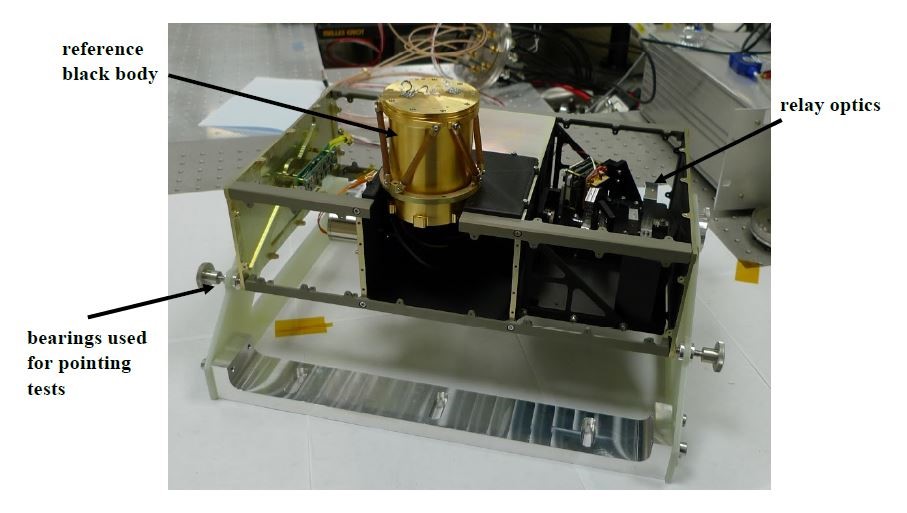Lead Organisation: University of Oxford
Project Lead: Simon Calcutt
This study aimed to bring the design of the Compact Infrared Imager and Radiometer (CIIR) to a level of maturity from which it can be implemented as a flight CubeSat payload with high confidence that ambitious scientific goals in remote sensing of the terrestrial atmosphere and surface can be achieved. It addressed concerns raised during an earlier study regarding radiometric calibration accuracy and pointing stability.
The CIIR was designed for both nadir viewing and scanning of the Earth’s limb, preferably from a Sun synchronous orbit. The infrared filter bandpasses analysed in the study were targeted to support investigations of the properties of clouds and aerosols and also monitor concentrations of stratospheric water vapour. The extent to which the CIIR can be used for limb sounding of trace gases and for inter-comparison with existing datasets depends critically on two areas:
- the absolute accuracy of the on-board calibration and
- the pointing stability during an observation.

A high-fidelity flight-like version of the CIIR CubeSat was manufactured and tested. Radiometric testing was performed which showed that absolute accuracies of less than ±0.5K are achievable. The accuracy was limited by systematic errors in test equipment and by the available optical relay used within the CIIR which had not been designed for use with the large detector array planned for use in CIIR. The team were unable to demonstrate the ability to correct in-flight for pointing jitter due to ambiguities in the detector array output.
The results of the study have allowed the team to obtain internal funding to produce an improved optical design and to procure a more modern detector array with which to repeat the jitter experiment. The results from the CEOI study have helped to refine the business case for a CIIR-based thermal-IR data service company. This led to a business development “sprint” session at the Satellite Applications Catapult in February 2019 and the team are now developing a spin-out company with Oxford University Innovations Ltd.
